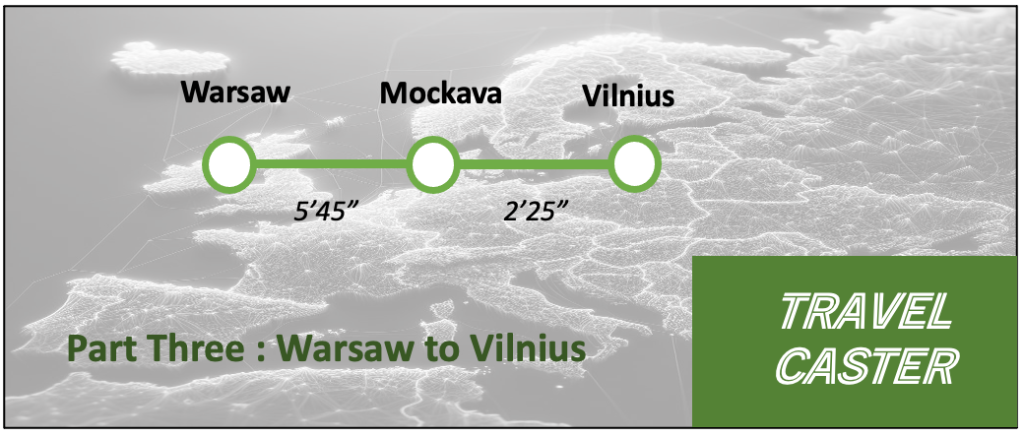I may be tempting fate, but Wednesday sees another sunny and chilly morning in Warsaw. A relatively early night meant the alarm at 6am wasn’t needed – I was already up and eating breakfast. In this part of Eastern Europe 100 Euro buys you a lot of hotel. The Hampton by Hilton has another enormouse breakfast buffet, which is welcome for the long day ahead.
Warsaw Central Station is bustling with morning commuters. A tip if you’re arriving here – take the escalator two floors up from the platform level – that way you’ll see the city before you, rather than emerging from a subway exit. This is a real international railway hub with connections to many other cities acros Europe; though Poland itself is well worth exploring with the cities of Wroclaw and Krakow all within half a days’ travel.
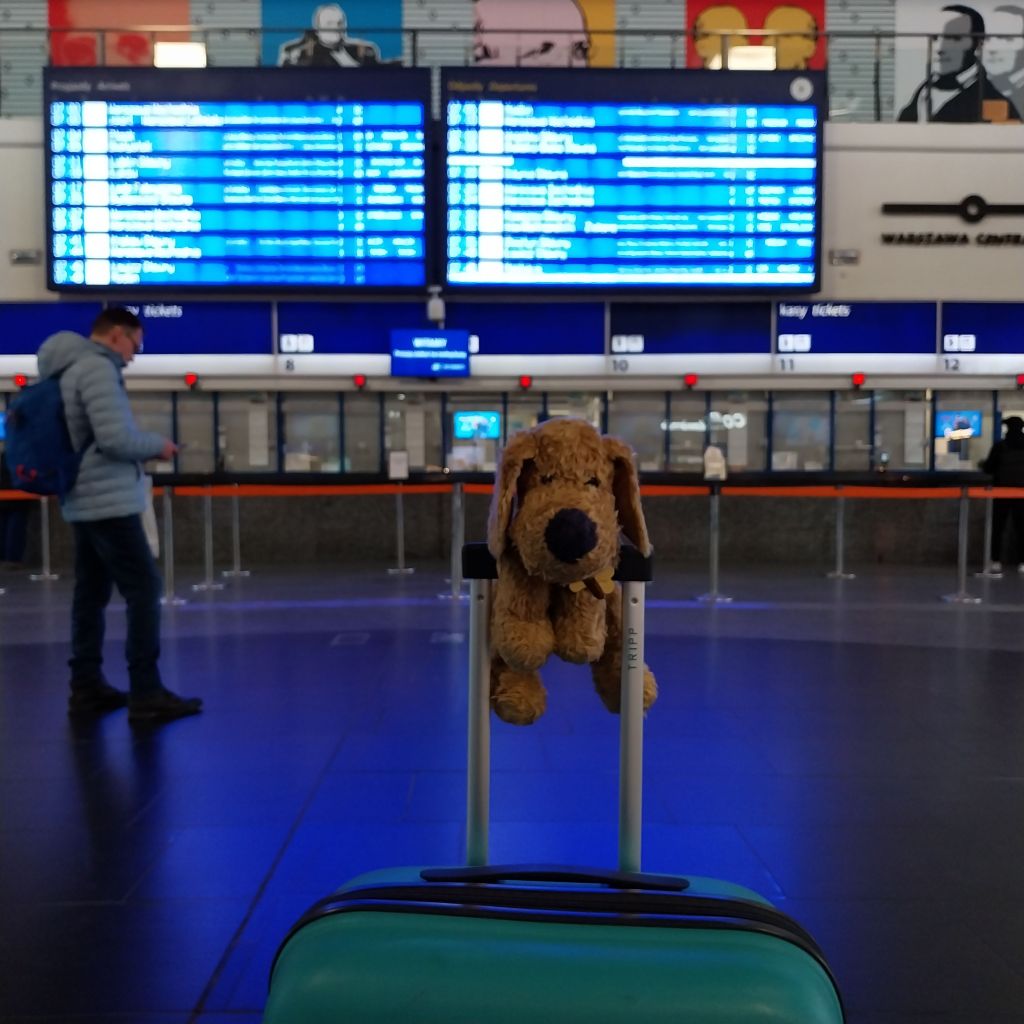
Today’s train to Vilnius is sold as a direct ticket, but there is once change at Mockova (pronounced Mots-kova) because Poland and Lithuania use different track gauges. The first train is busy – and I’m unable to get a reservation in first class. And despite my ticket stating “window seat” it’s in part of the carriage with no view at all.
A young American student joins me for this part of the journey. He’s studying Sociology and Literature in Florence – as you do – and is making the most of his time by taking tips across Europe. Living here, it’s easy to forget just how far removed the continent can seem from a place like the United States, and with cheap travel possible, it’s obvious to see the attractions of getting around as much as you can.
What I do manage to see of the countryside in North Eastern Poland seems mostly flat, largely agricultural. We stop at a number of stations that seem impossibly rural, where a few people get on the train but more people get off.
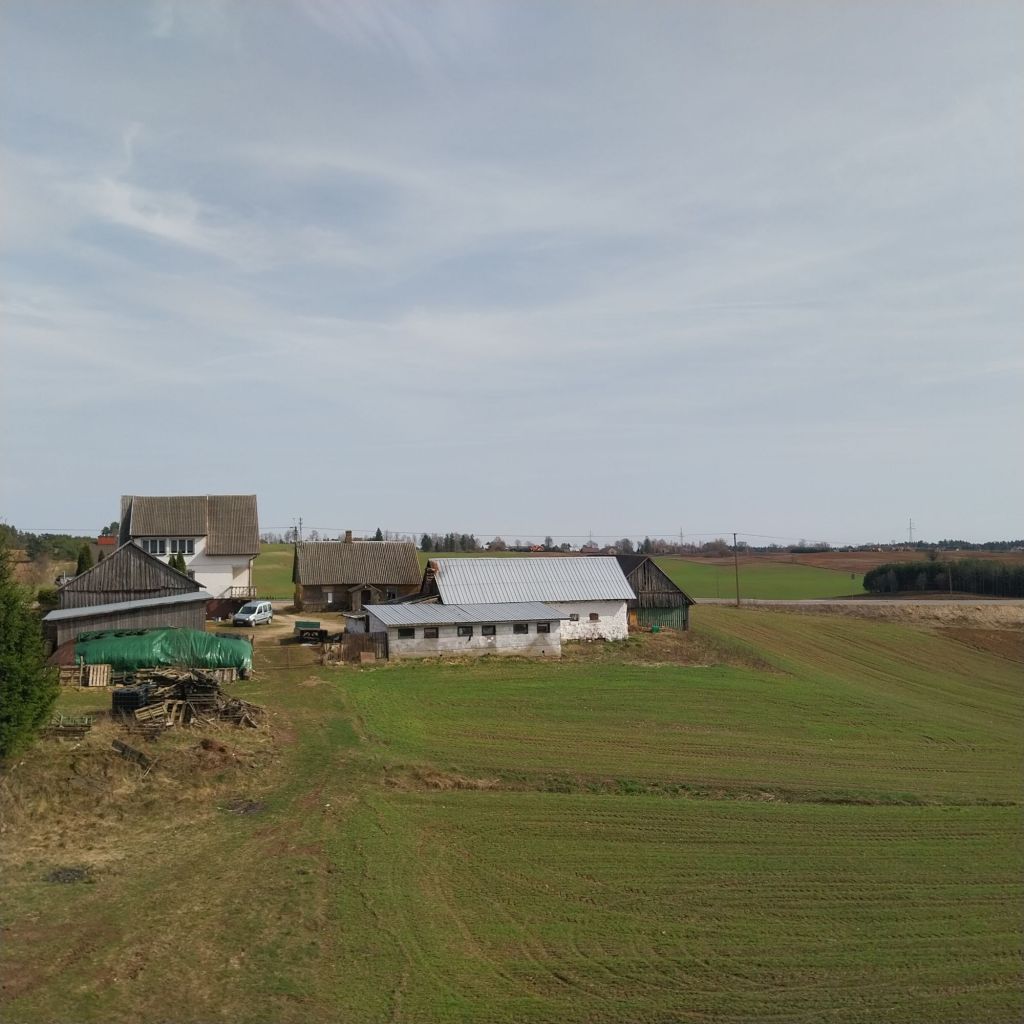
As we cross the border into Lithuania my watch tells me there’s still about an hour of the journey to go, but a local woman tells me we’ll be in Mockava in just 20 minutes. We’ve skipped forward and changed a time zone, though most of the passengers don’t notice, and seem surprised hen we arrive at the changing point.
Mockava is essenitially a railway junction. The village has a population of 59, and the emerging passengers from Warsaw effectively double that number for around half an hour each day. There is only one connecting train, and the border guards check our passports, along with those arriving on the incoming service. And changing trains couldn’t be easier.
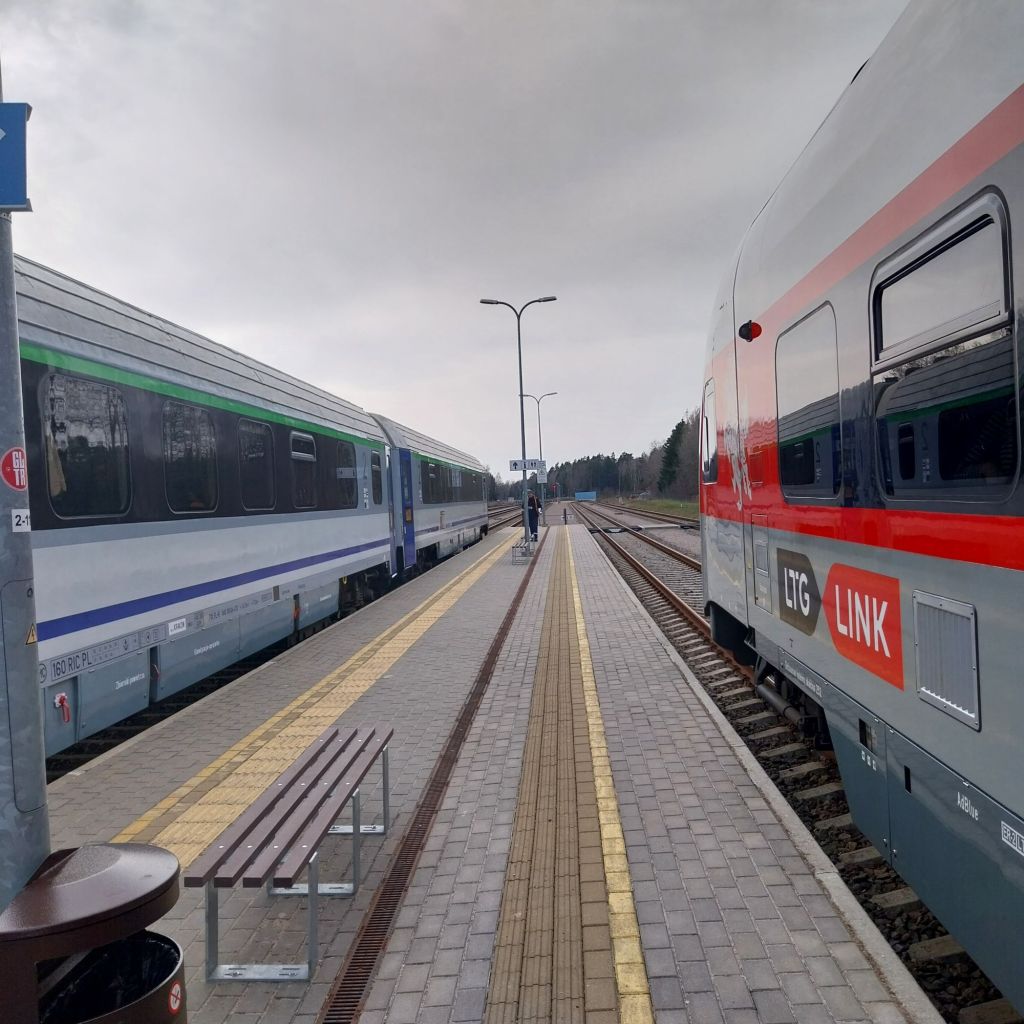
TheLithuanian train is smaller than the Polish one, but far more modern. There’s no first class, only standard – but it’s a level of comfort that many in the UK can only dream off. The staff are polite and efficient and there’s plenty of space to watch the new country emerge.
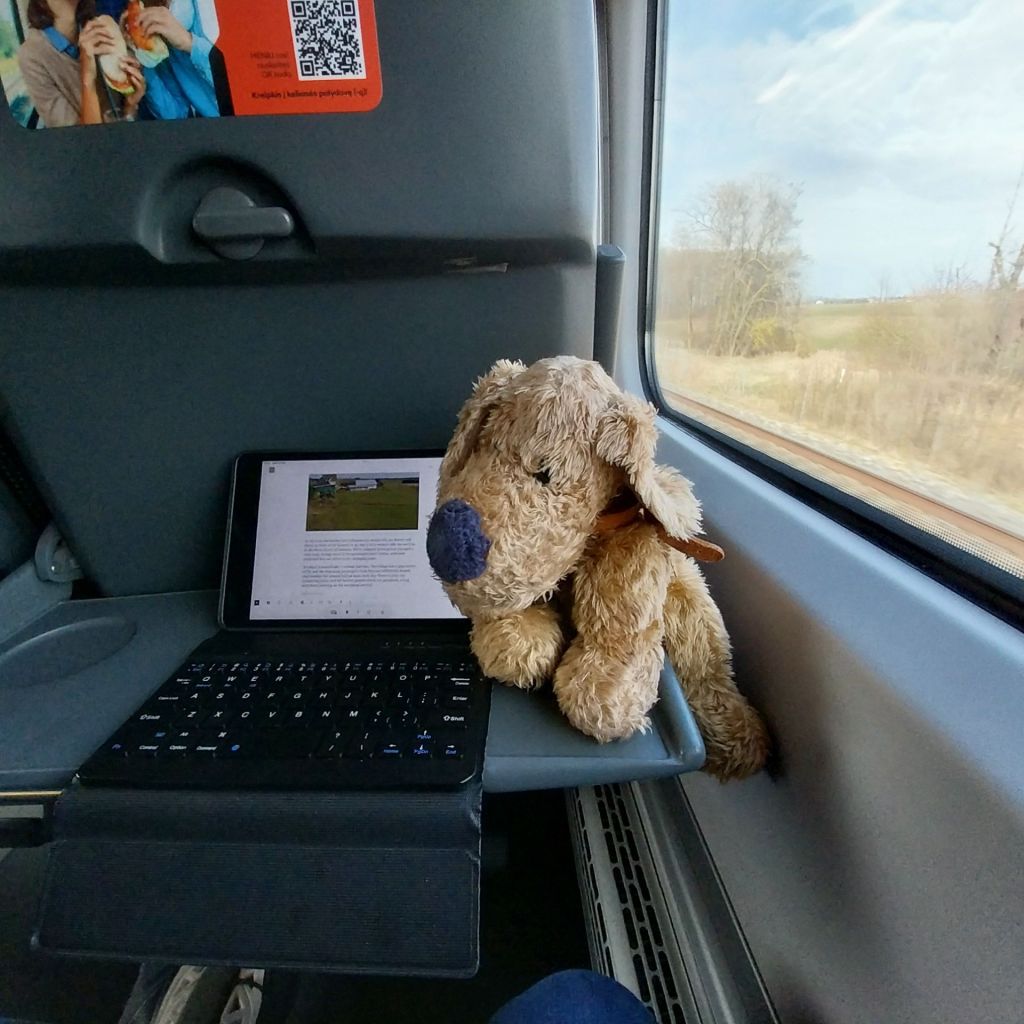
24 Hours in Vilnius
The Lithuanian capital has plenty to offer, but for a short stay I figure it’s best to concentrate on the Old Town. It’s one of the largest in Europe, but easy to navigate by foot, being mostly flat. I’ve booked a hotel just around the corner from the Dawn Gate, one of the area’s best known landmarks, which looks stunning after the sun goes down.
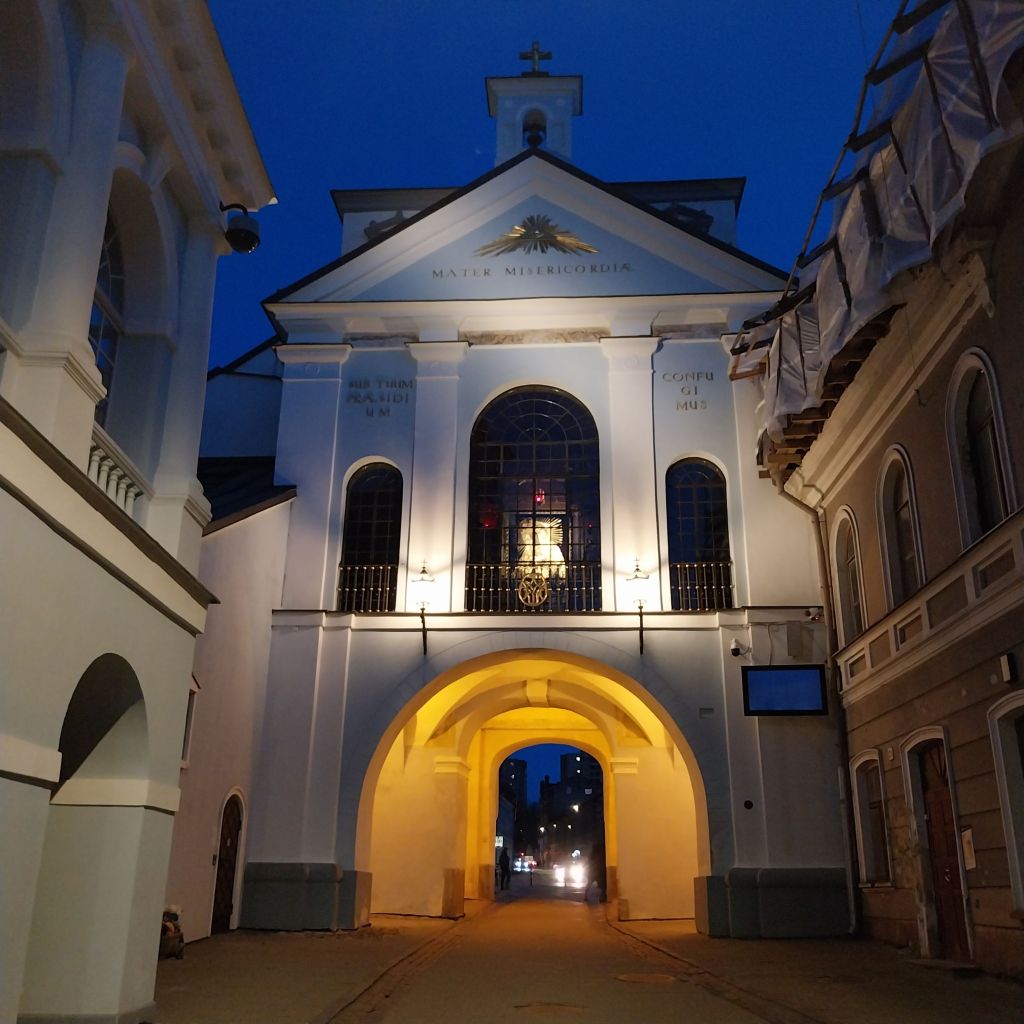
Getting here from the main train stations looked easy enoug on the map, but maps can be deceiving. The Dawn Gate is only 1km by foot, but nderfoot the city’s narrow – and poorly repaired – pavements can make it challenging when dragging a suitcase.
The Domus Maria hotel is right by the Dawn Gate and is impressive for the price. In 2024, I’ve paid about 60 Euro per night which includes breakfast. The building is a former monastery, tastefully modernised with comfortable rooms and extremely friendly staff. It’s also an ideal place to go exploring, day or night.
My first evening starts in a bar called Spunka. Once you’ve stoped laughing… it’s actually a great place for decent craft beer and simple food. Not the cheapest and not the most stylish of places, but don’t believe everything you read in the reviews linked above. It’s getting late, but as I walk back towards the hotel I’m drawn towards the sound of music. Not perfectly sung. In fact, sung quite badly at times.
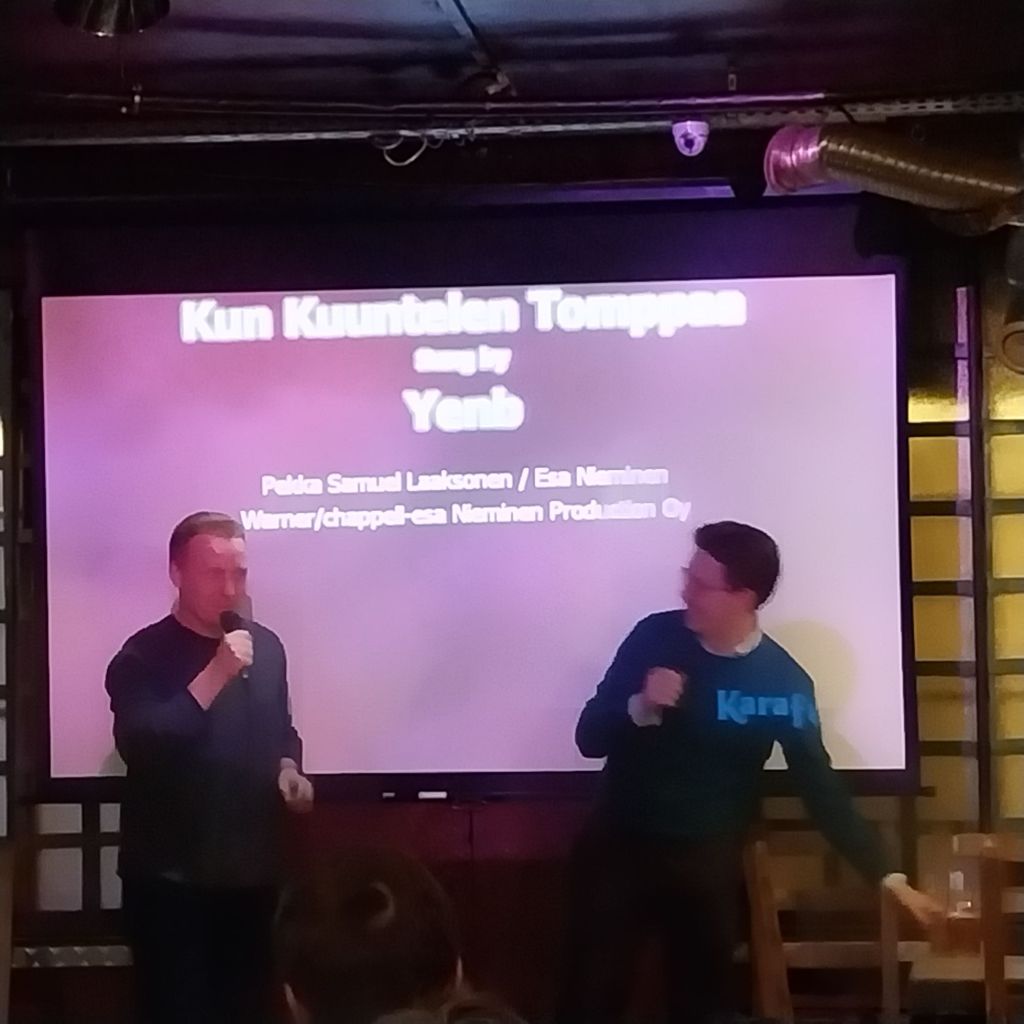
This is Bix Barras, and while it’s described as a bar that “mainly plays rock music”, its tuned out that Wednesday is karaoke night. These lads are singing a jolly tune in Finnish, but most performers opt for more traditional songs in English. There’s everything from Queen to The Procaimers. And it’s rather entertaining. There are plenty of higher end bars and restaurants in the Old Town too – but here a beer comes on at juts over 4 Euro. Again, you can probably find it cheaper, but this is the tourist heart of a capital city.
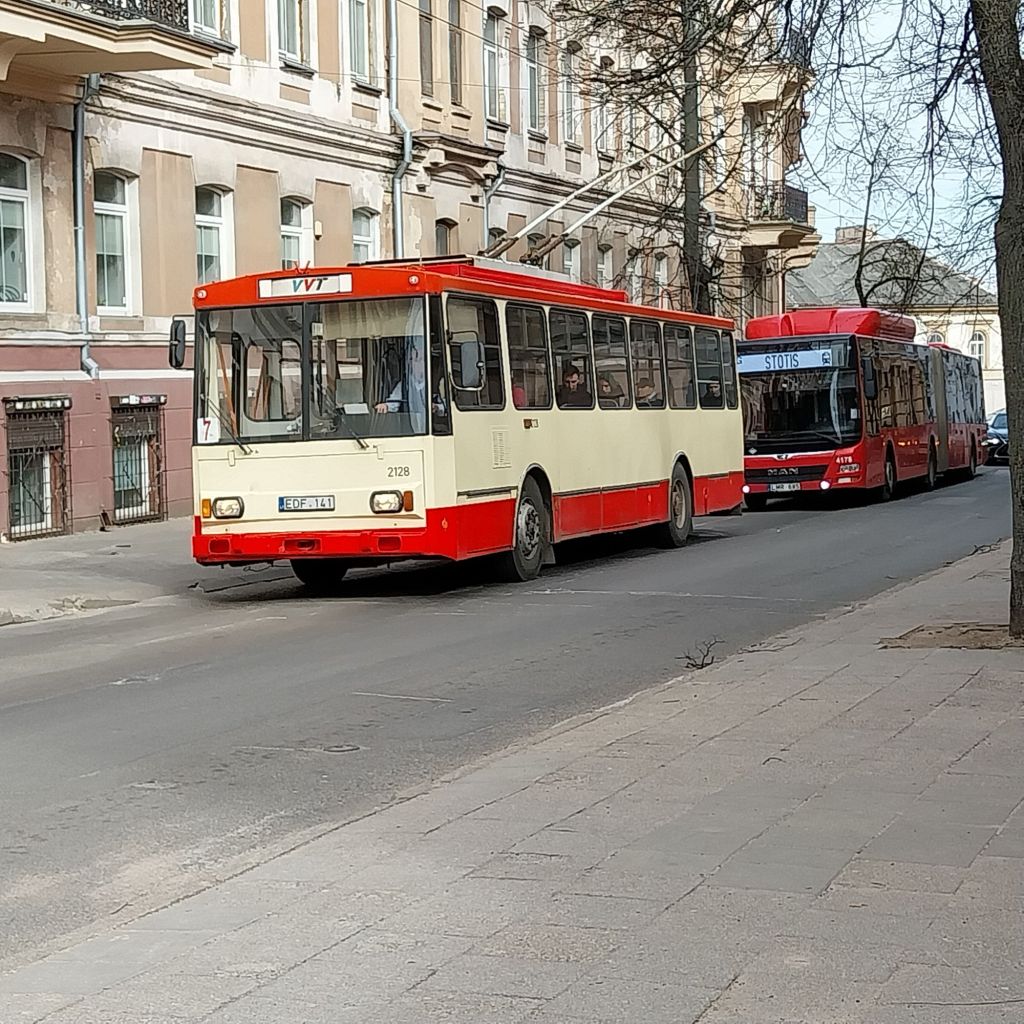
It’s a sunny morning – breakfast at the Domus Maria isn’t quite as elaborate of those in Warsaw or Cologne, but for the economy price I’ve paid it’s enough to prepare me for the day. The Old Town has over a dozen churches, each with their own story and character. Lithuania is a country of great religious diversity, with different denominations of Christian and Jewish followings. At the corner of the entrance to Vilnius University, the organ is playing in the Church of St John the Baptist., which has a stunning interior.
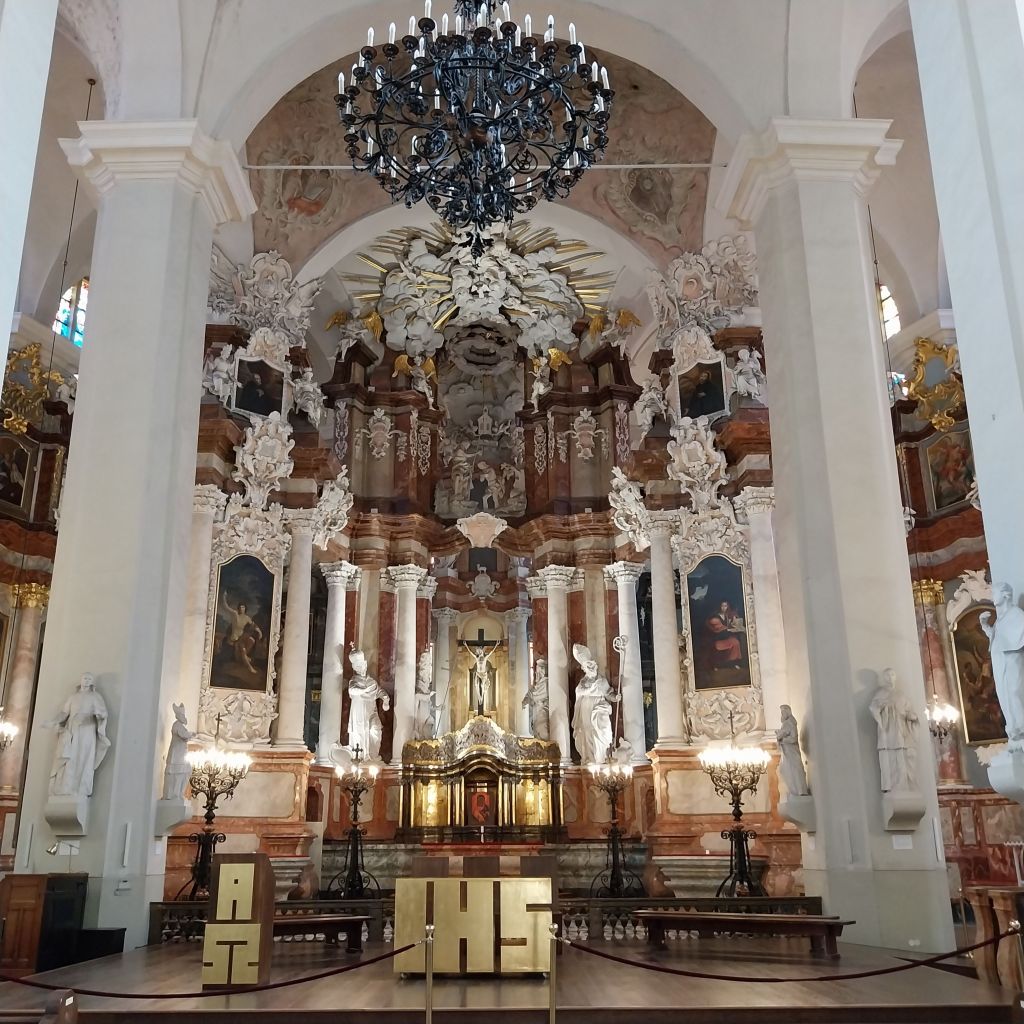
Lithuania has always had a mixed relationship with its neighbours. Across from the main town hall, a plaque tells the story of the Vilnius Getto, a notorious district established by the occupying Nazis during the Second World War. The Jews were forced to move here and used for labour. Many were killed or deported to work in Estonia and Latvia. The memorial tells us that, from a population of 58,000 Jews, fewer than 2,000 survived.
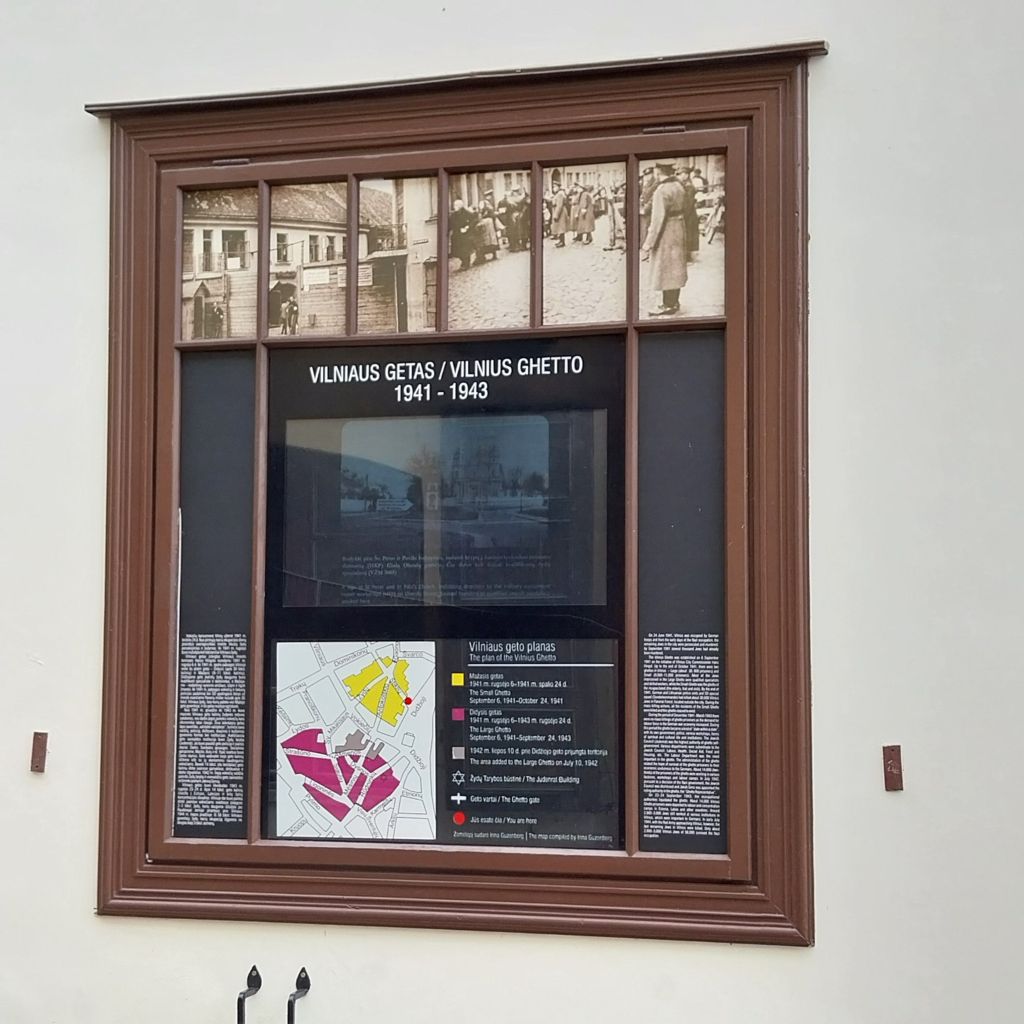
You’re never to far from military history in this part of the world. On a large square housing the Prsidential Place, a modern monument symbolises NATO, the defence alliance that unites many countries cross the North Atlantic. At the border crossing yesterday, I’d noticed a freight train loaded with tanks. And here in Vilnius the buses all display signs saying that Lithuania stands together with Ukraine – where Russia is currently waging war.
Of all the religious buildings here, Vilnius Cathedral dominates the lower part of the Old Town. And its neighbouring bell tower offers a birds eye view of the city. Unlike the viewpoint in Warsaw, there is no lift here – just a series of winding staircases and perilous wooden ladders. But for 6 Euro its a climb worth making.
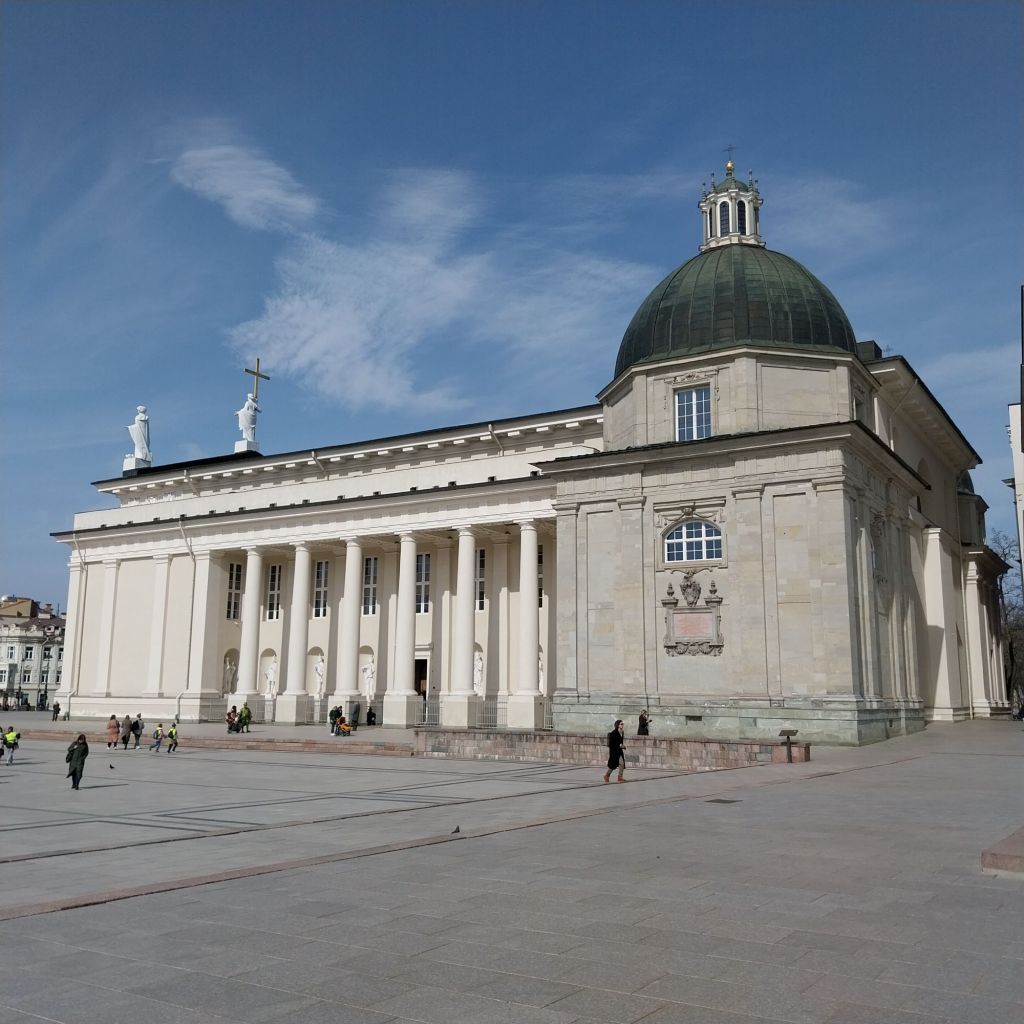
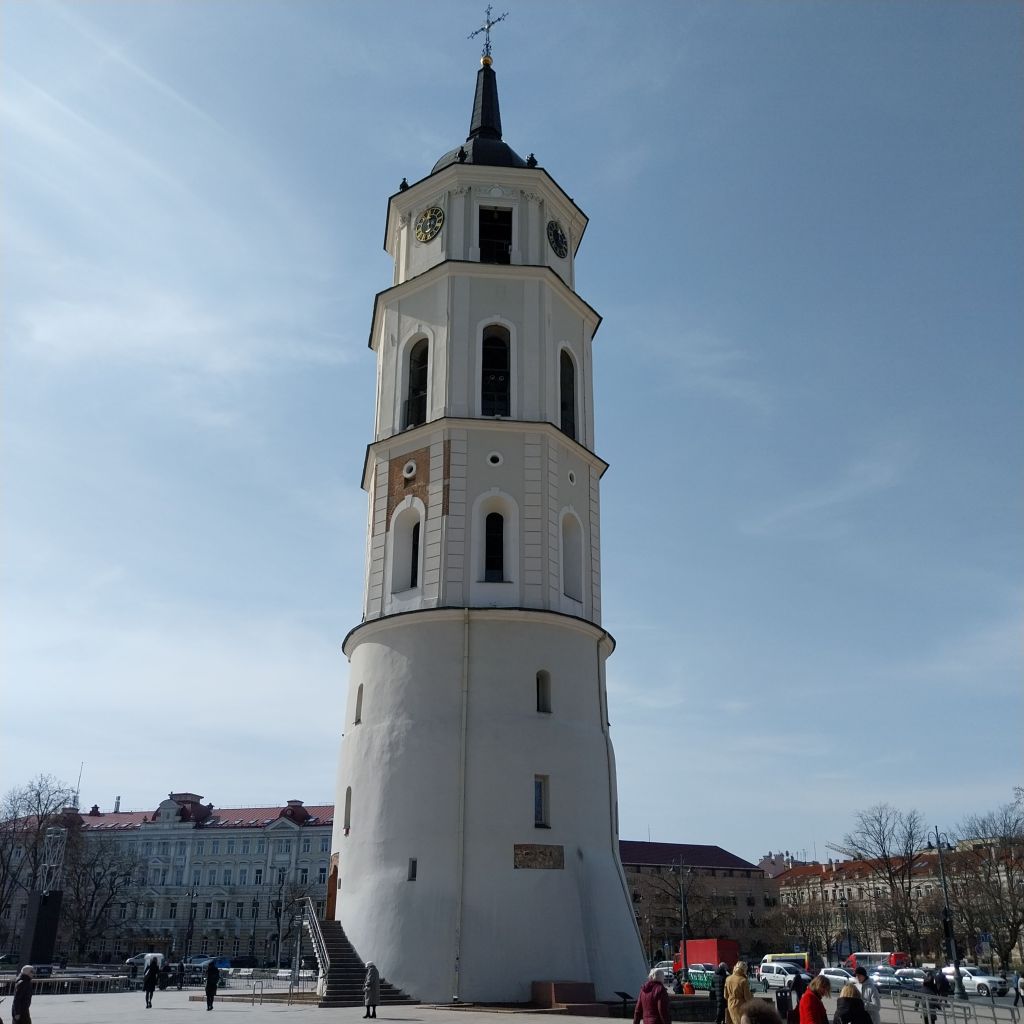
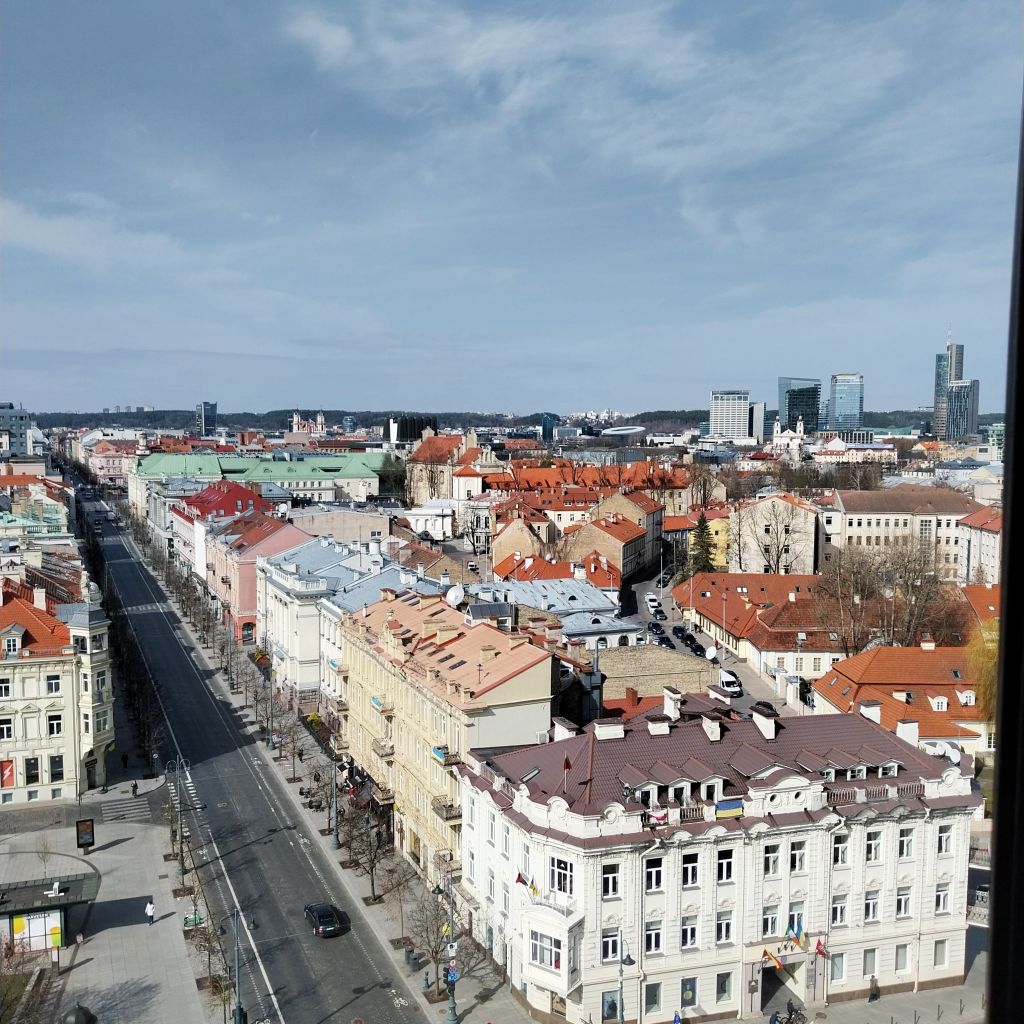
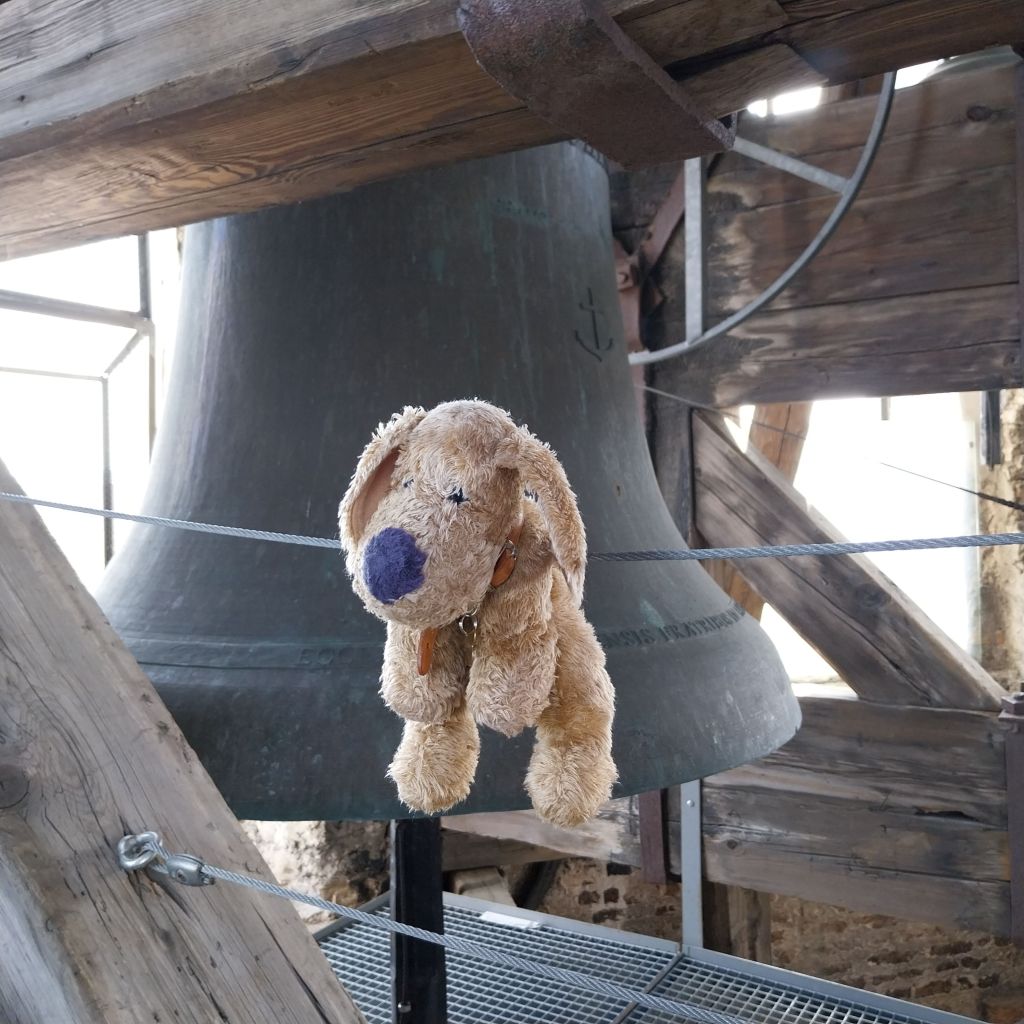
There’s much mor to Vilnius than just it’s Old Town, but for a short stay you can see a lot in just a few hours. People are friendly, the bars and restaurants have staff that speak English (and likely a few other languages too) and overall it comes across as a welcoming place.
The area around the main train station has its usual mix of characters – a few drunks and rough sleepers – but they largely ignore the visitors. It’s a place full of history and great hospitality.
Getting here
By train : There’s only one train per day between Warsaw and Vilnius which leaves Warsaw Central Station at 0746 (2024 timetable). If you’re using a rail pass you can buy reservations 30 days before travel from the PKP Interctity website. In theory reservations are’t mandatory but the trains get busy. At Mockava you change to a Lithuanian Railways train. Reservations aren’t issued for this section but there are plenty of comfortable seats.
Tip : Both trains on this journey have restaurant cars which are reasonably priced by Western standards. But you can save more by bringing your own snacks from one of the many convenience outlets in Warsaw or Vilnius.

